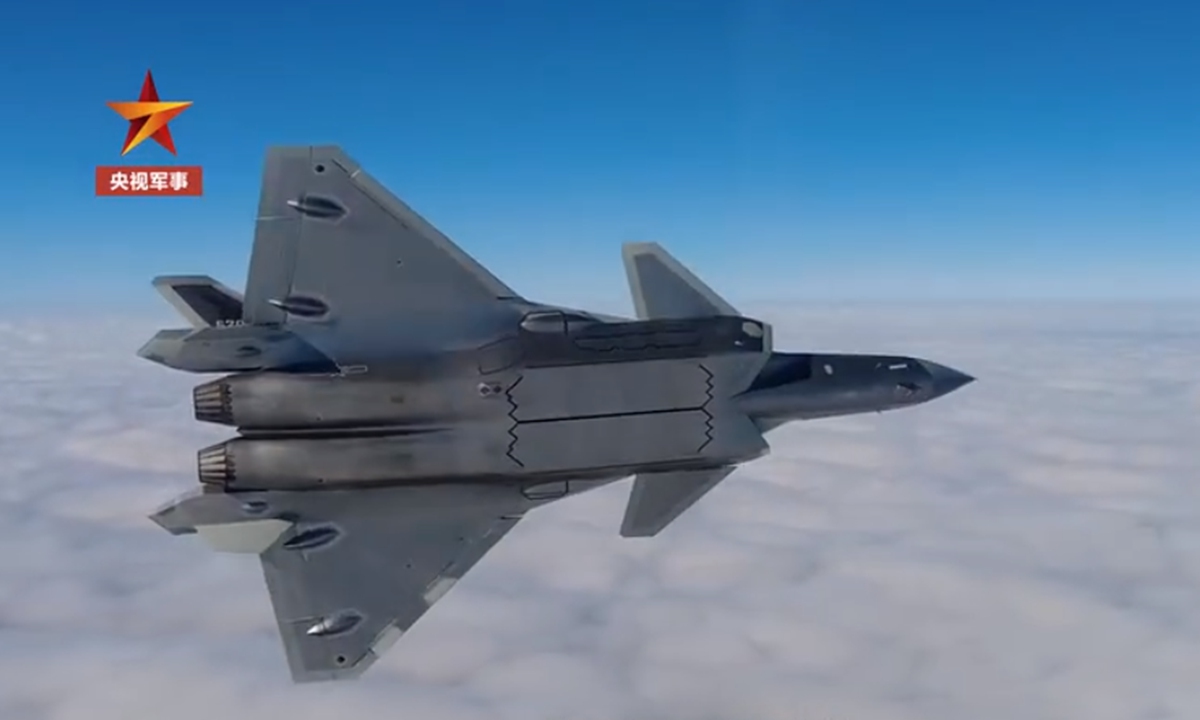Incapable Against J-20 Fighters – US Air Force Says ‘Not Ready For 21st-Century Battle’ With China Due To Outdated AWACS
BySakshi Tiwari- March 20, 2022
The enhanced presence of the US Air Force & Navy in the Indo-Pacific could mean more encounters with the Chinese military, as was recently revealed by the Pacific Air Force Chief Kenneth Wilsbach about the F-35 and J-20 stealth fighters.
The Pacific Air Force Chief also stated that the Boeing E-3 Sentry AWACS fleet is experiencing considerable obsolescence. He was speaking at an interaction hosted by the Mitchell Institute of Aerospace Studies.
“Our E-3 fleet really struggles from a maintenance reliability standpoint,” said Wilsbach. “We have four of them in PACAF and often times all four of them are not able to fly because of maintenance issues.”
Further, Wilsbach said he has long supported the Boeing 737-based E-7 airborne early warning and control aircraft. The E-3’s problems are mostly minor, involving the aircraft’s electronics, hydraulics, and engines. He also questioned its viability in today’s combat environment
“When it gets airborne, those sensors that we rely on with the E-3 aren’t really capable in the 21st-century fight, especially against a platform like the [Chengdu] J-20 or something similar to that. It just can’t see those platforms far enough out to be able to provide an advantage to the shooters.”
Pratt & Whitney TF-33 engines power the E-3 aircraft. Air Combat Command Head Gen. Mark Kelly had stated in October last year that the E-3 fleet had been afflicted by the paucity of engines and spare parts, which has severely limited their deployment, as previously reported by the EurAsian Times.
E-3 Sentry AWACS aircraft have been in service with the United States Air Force for almost 30 years now. A single AWACS aircraft can keep an eye on an area of up to 120,000 square miles.
The E-3 can detect and track hostile aircraft operating at low altitudes over any terrain in a tactical role. They can also recognize and control friendly aircraft that are flying in the same area. The E-3 is capable of detecting, tracking, and intercepting airborne threats as part of its strategic defense duty.
View attachment 825875
File Image: J-20 Fighter Aircraft
However, maintenance-related constraints and the lack of operational readiness have been there for a while. Due to this reason, General Wilsbach advocates for an upgrade to E7 AWACS which has been a matter of discussion for a while.
Much Needed Upgrade To E-7
The E-7, which is operated by regional US allies – Australia and South Korea, is more capable and reliable than the E-3 that USAF is currently operating, according to Wilsbach. The US Air Force is considering purchasing an E-7.The Air Force has not committed to or budgeted for the purchase of E-7s to replace the old Boeing E-3s, but it has been preparing the ground for such an acquisition. Last month, the service issued a request for information seeking advice from the industry on the purchase of at least two of the planes.
Last year, Boeing predicted that the US Air Force will announce intentions to buy its E-7 Wedgetail airborne early warning and control jet in 2022, fueling anticipation that the military would include funding for the plane in its next budget.
The Air Force is considering purchasing the E-7 Wedgetail, a Boeing 737 derivative that Australia and the United Kingdom have already purchased, to replace its fleet of 31 E-3 Sentry airborne warning and control system planes, also known as AWACS.
The Air Force had requested information from Boeing in order to conduct “studies, analyses, and activities required to ascertain the current E-7A baseline configuration and determine what additional work would be necessary” to bring the plane up to Air Force “configuration standards and mandates.” It didn’t say when it would be seeking the new aircraft.
The Wedgetail, which has been in service with the Royal Australian Air Force since 2009 and employs a fixed blade-like antenna on a 737 airframe rather than a spinning radome like the 707-based E-3 Sentry, was designed for the Royal Australian Air Force in 1999.
It has also been chosen to equip the air services of the United Kingdom, South Korea, and Turkey, providing interoperability benefits.
The need for a Wedgetail acquisition is heightened by Boeing’s intention to phase out the 737 Next-Generation—on which the E-7 is based—by 2025, as evidenced by the “diminishing manufacturing sources” information request.
The Wedgetail is similar to the Navy’s P-8 Poseidon maritime patrol aircraft, which is also used by a number of other countries. In 2015, Boeing proposed a P-8/737-based JSTARS replacement, but the Air Force rejected it in favor of the ABMS, according to Air Force Magazine.

Incapable Against J-20 Fighters – US Air Force Says 'Not Ready For 21st-Century Battle' With China Due To Outdated AWACS
The enhanced presence of the US Air Force & Navy in the Indo-Pacific could mean more encounters with the Chinese military, as was recently revealed by the Pacific Air Force Chief Kenneth Wilsbach about the F-35 and J-20 stealth fighters. Lightning Aircraft Carrier – Loaded With F-35B Stealth...
 eurasiantimes.com
eurasiantimes.com








